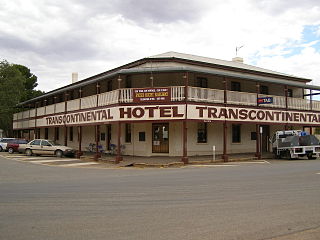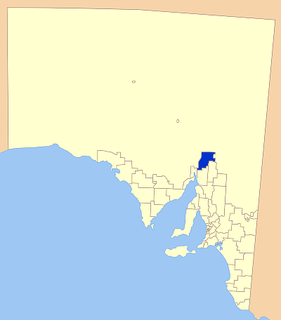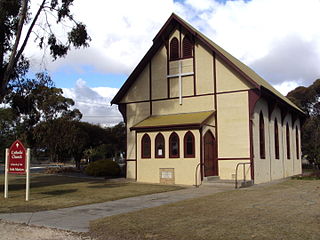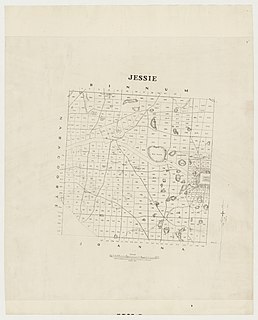| Simmonston South Australia | |
|---|---|
Ruins of the half-built hotel at Simmonston | |
| Coordinates | 32°04′22″S138°09′08″E / 32.07289728°S 138.15227855°E Coordinates: 32°04′22″S138°09′08″E / 32.07289728°S 138.15227855°E [1] |
| Established | 15 April 1880 [2] |
| LGA(s) | Flinders Ranges Council |
Simmonston was a former town in South Australia which was abandoned before completion in the early 1880s. The town was originally intended to be on the new railway extending north from Quorn, but the final route passed through Gordon instead. Today, the stone ruins of a hotel and its cellars are still visible. The town is reported as being "named after Sir Lintorn Simmons, Field Marshal and Commandant of the Royal Engineers" by William Jervois, the 10th Governor of South Australia. [3] The creation of the town was announced in April 1880 as follows: "Portions of Crown Lands in the Hundred of Kanyaka have been reserved as a site for the new town of Simmonston." [4] Plans to build the hotel were announced three weeks later in May 1880 by a D. McFie. [5] The site of the former town is currently located in the gazetted locality of Kanyaka and within the local government area of the Flinders Ranges Council. [1]

South Australia is a state in the southern central part of Australia. It covers some of the most arid parts of the country. With a total land area of 983,482 square kilometres (379,725 sq mi), it is the fourth-largest of Australia's states and territories by area, and fifth largest by population. It has a total of 1.7 million people, and its population is the second most highly centralised in Australia, after Western Australia, with more than 77 percent of South Australians living in the capital, Adelaide, or its environs. Other population centres in the state are relatively small; Mount Gambier, the second largest centre, has a population of less than 30,000.

Quorn is a township and railhead in the Flinders Ranges in the north of South Australia, 39 km northeast of Port Augusta. At the 2016 census, the locality had a population of 1,230 of which 1,131 lived in its town centre.

Field Marshal Sir John Lintorn Arabin Simmons was a British Army officer. Early in his career he served as Inspector of Railways, Secretary of the Railways Commission and then Secretary of the Railway Department under the Board of Trade. He went on to be British Commissioner with the Turkish Army providing advice to General Omar Pasha during the Crimean War. He assisted the Turks at the defence of Silistra and then led them at the Battle of Giurgevo before landing with them at the Battle of Eupatoria and remaining with them for the Siege of Sevastopol. After that he became British Consul in Warsaw, Commander, Royal Engineers at Aldershot and then Director of the Royal Engineer Establishment in Chatham. He went on to be Lieutenant-Governor of the Royal Military Academy and subsequently Governor of the Academy. His last appointments were as Colonel Commandant of the Royal Engineers, as Inspector General of Fortifications and then as Governor of Malta.













